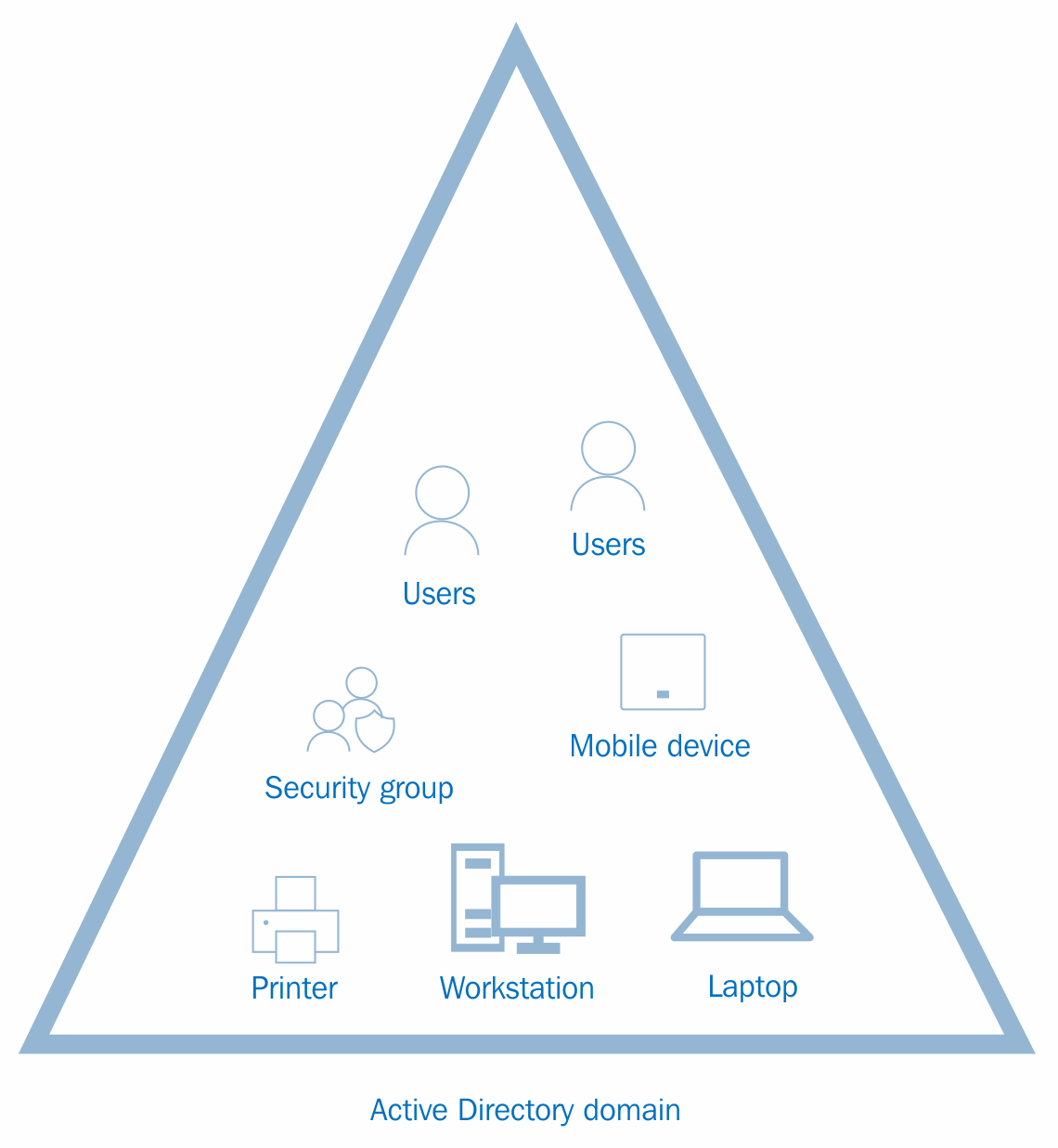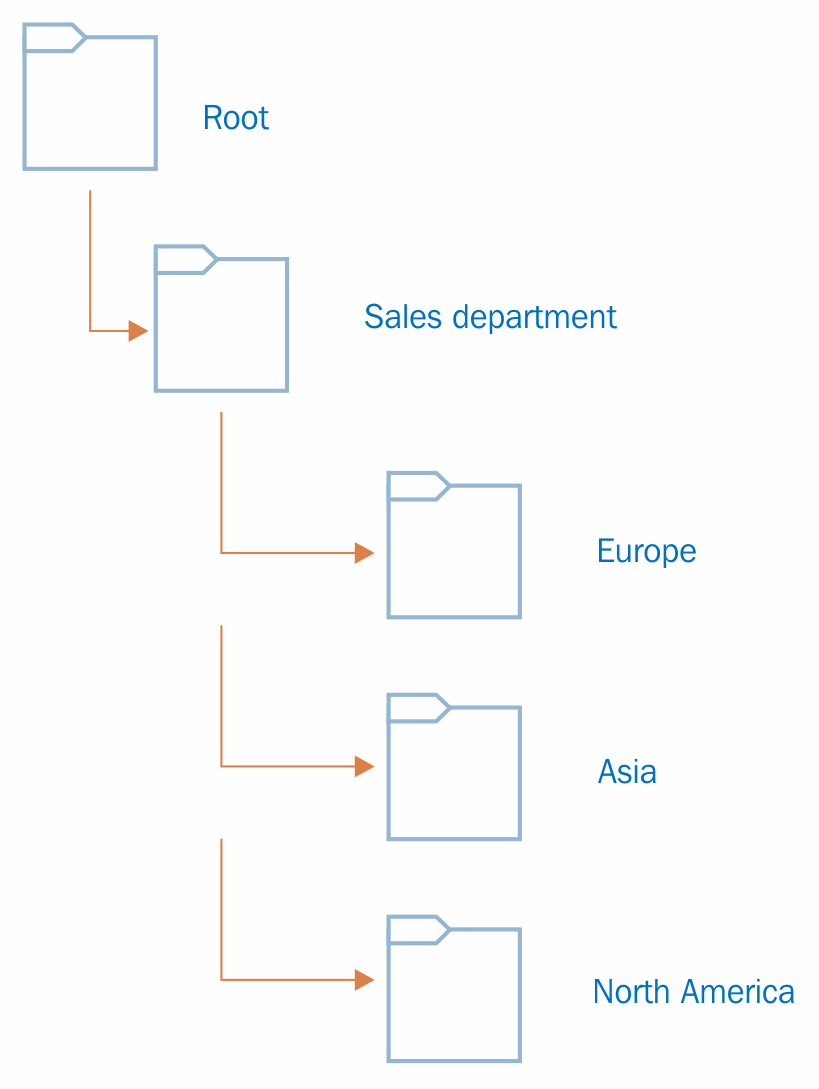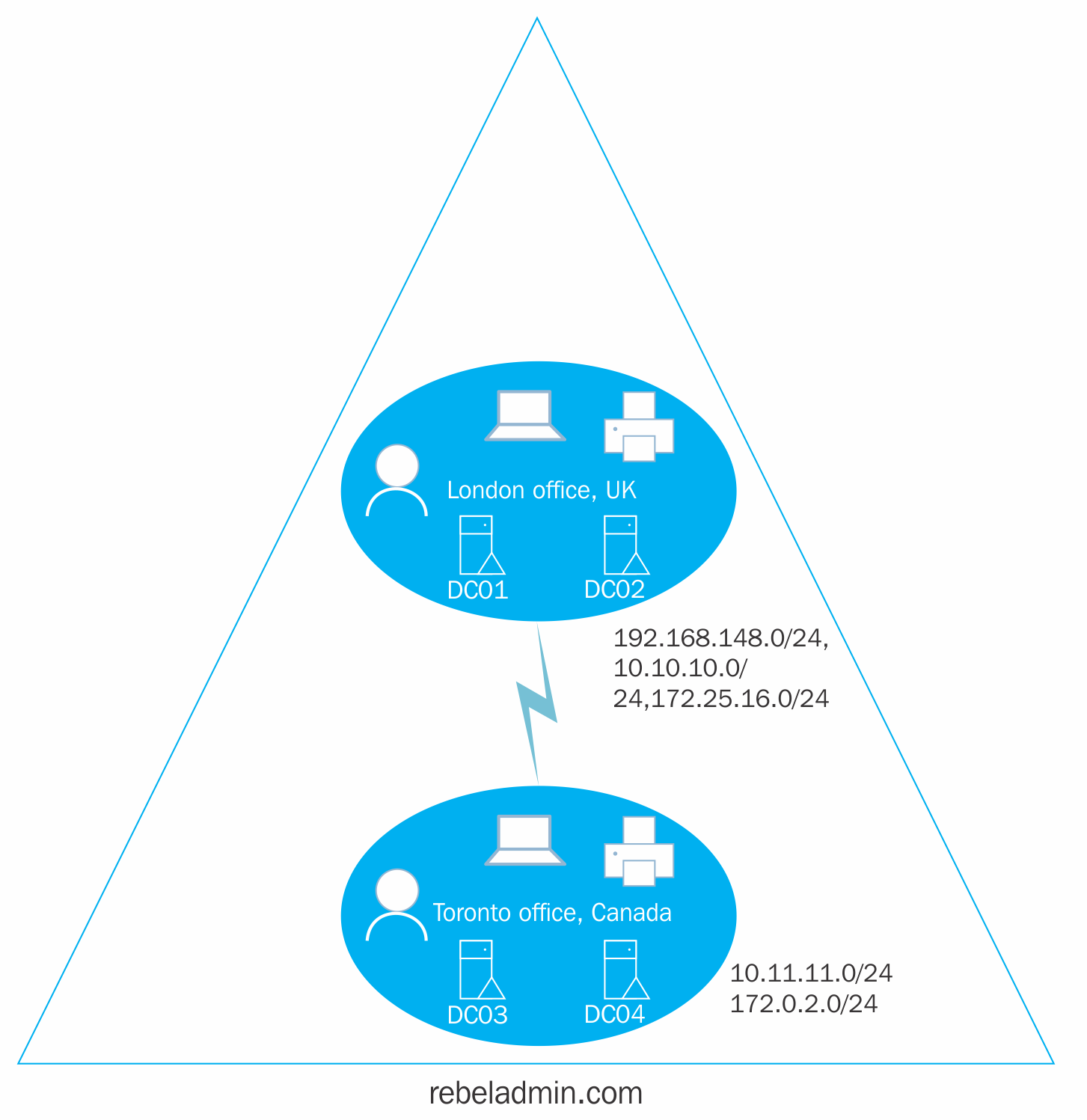Amazon is the world's largest rain forest. There are different animal species, and more than 400 tribes live in there. Each of these animal species is different from each other. Reptiles, mammals, snakes, fish all have different characteristics and we can group each of them by considering their characteristics. Tribes living in the forest also have their own language, culture, and boundaries. But all these animals and tribes share one forest. They use food, water, and other resources from the Amazon forest to survive. Amazon forests have well-defined boundaries. Another forest in 100 miles from an Amazon forest is not called an Amazon forest. Its name and boundaries are unique.
The Active Directory forest also can be explained in a similar way. The Active Directory forest represents a complete Active Directory instance. It is made of one or more domain and domain trees. I will be explaining what domain and domain trees are in detail later in this chapter. Each domain has its own characteristics, boundaries, and resources allocated. But at the same time, it shares a common logical structure, schema, and directory configuration within the forest. Similarly, tribes have a relationship with the forest and different tribes, and domains in the Active Directory forest will have a two-way trust relationship. Different tribes in the Amazon forest aren't named after Amazon. Each tribe have its own name. Similarly, domains in a forest can contain any domain name:

The first domain controller in the Active Directory service deployment is important. When you create the first domain, it will create the forest as well. Then, the first domain will become the forest root domain. A domain tree contains its own root domain. But forests can contain multiple root domains.
In the previous diagram, Rebeladmin Corp. is an IT solution provider. The rebeladmin.com is the forest root domain. It does have another two companies: one is Rebeladmin IT with the domain name rebeladminit.com, and it provides managed IT services. The other company is My training, with the domain name mytraining.ca, and it provides IT training to professionals. The rebeladminit.com and mytraining.ca both are root domains in their own domain trees. Both domains in the forest will trust each other with two-way transitive trust.
Two-way transitive trust is a logical link between domains where the trusting domain honors the logon authentication of the trusted domain. When considering the previous example, users in rebeladminit.com can authenticate into mytraining.ca domain and vice versa. Any object located in domain inherently trusts other objects in other domains in the same forest. This is not the same as when considering authentication between forests. For that, it may (depending on the trust method) require additional login credentials. An organization can have a single forest or multiple forests based on the company's business requirements.
When Microsoft releases a new Active Directory service version, new features are bound to the forest and domain functional levels. If you want to use Active Directory Domain Services 2016 forest level features, your directory's Active Directory forest should use the Windows Server 2016 forest functional level. Before Windows Server 2012 R2, forest functional level upgrades were one-way. Now it is possible to roll back to the lower forest functional level if required. This is if the forest function level is lower it allowed to add the latest domain controller version. For example, if the forest function level is Windows Server 2008, it is allowed to install the domain controller inside the forest with the operating system Windows Server 2016. But this doesn't mean it can use features provided by Windows Directory Services 2016 until it upgrades its domain and forest functional levels. If you upgrade the forest function level to Windows Server 2016, you can have only domain controllers running a minimum of Windows Server 2016.
































































